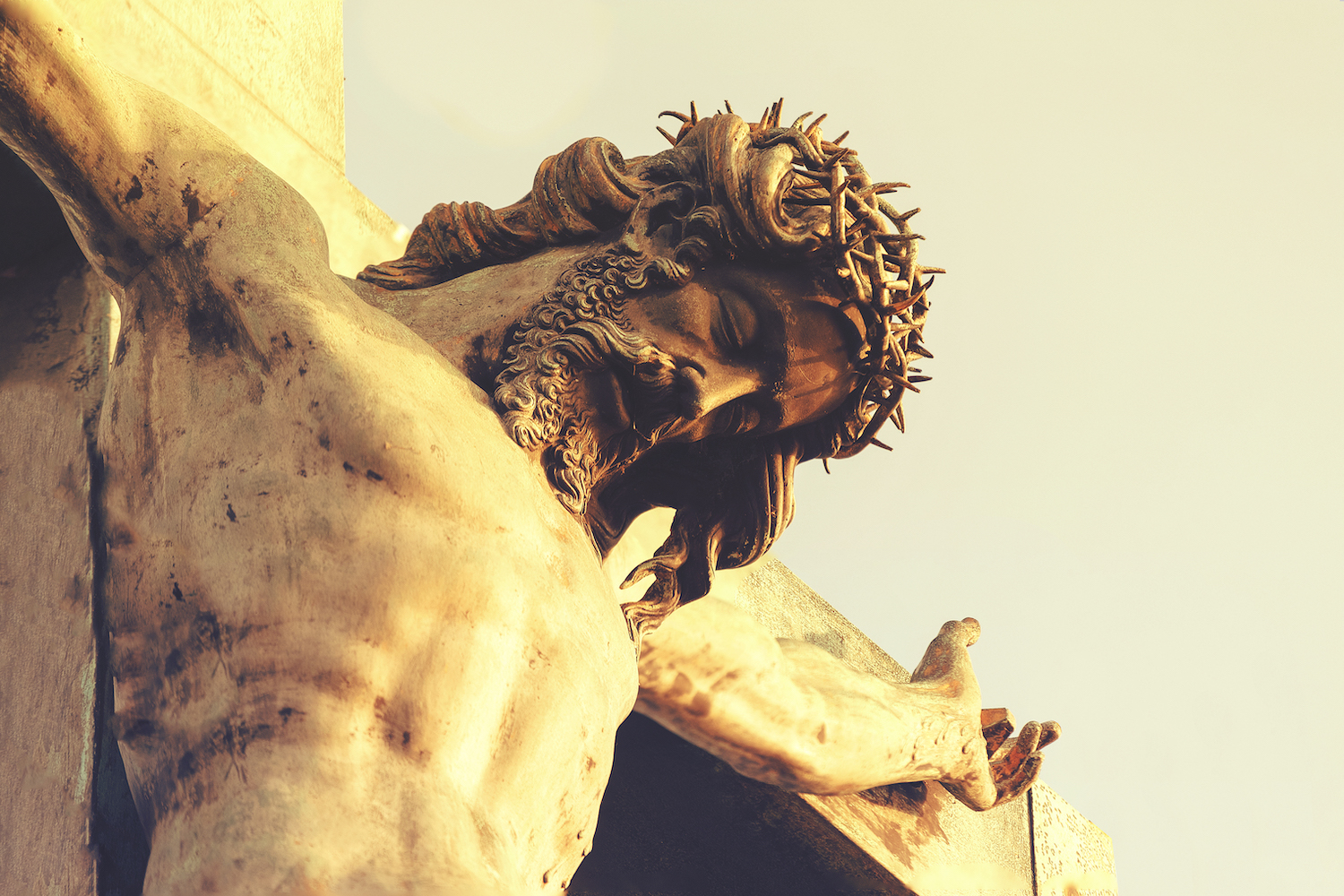Christ as Role Model for Missions

The day had been exhausting. Jesus, clearly tired due to the physical punishment and the suffering of the terrible night, was taken before Pilate. The governor was accustomed to facing all kinds of people. Everyone bowed before his might. The humble Jew who stood before him was not like others he was used to dealing with. His presence and His story put Pilate's political leadership in jeopardy. The baffled governor asked a question that resonates to this day: “What shall I do, then, with Jesus who is called the Messiah?” (Matt. 27:22). This is a question that can not be ignored.
The history of the Christian mission is tightly bound to the person and work of Jesus Christ. His identity (who Jesus is) and His mission (how He came to this world and for what purpose) are closely related. Matthew, Mark, and Luke record Jesus posing this key question regarding Himself: “Who do you say I am?” (Matt. 16:13-17).
During the years of Jesus’ public ministry, people’s expectations about His mission were often opposed to the divine purpose. Some waited for a Messiah who would free them from the political yoke of the Roman Empire. Jesus’ plan was to free them from a greater form of slavery. These expectations marked a stark contrast between the temporary and the eternal; the human and the divine. These contrasts still take place today regarding Jesus and His mission. We often try to reduce Him to our personal expectations and demands.
Answering the question, “Who is Jesus?” is necessary in the life of every disciple of Christ, since it connects us to His model of mission.
As we study the life and ministry of Jesus, we come upon three key aspects that connect the life and mission of Jesus: His incarnation, His crucifixion, and His resurrection.
The Incarnation of Jesus: God Became Like Us
“The Word became flesh and made his dwelling among us…” (John 1:14).
The incarnation of Jesus is a historic reality that outlines the missional model we are to imitate. Jesus became human because He loved us, but He was also bound to a historical and cultural background. He was a Jew in the first century, and He became part of the structural and social realities of His time. Jesus’ incarnational style was centered around the most vulnerable people of His generation. Children, women, Samaritans, the poor, and the marginalized were the protagonists of Jesus’ mission.
The message of Jesus is universal and inclusive, crossing all kinds of barriers, leaving aside prejudices. At the same time, the content of Christ's message is one of hope and redemption in the context of the kingdom of God. This presents us with many opportunities! Our world is a mission field full of contrasts, with an emerging social reality defined by discouraging social markers, waiting for an incarnational and transformative message.
The Cucifixion and Death of Jesus: The Sacrifice as Supreme Evidence of Love
“But God demonstrates his own love for us in this: While we were still sinners, Christ died for us” (Rom. 5:8).
Article of Faith VI of the Church of the Nazarene, regarding atonement, clearly defines what Jesus did for us: “We believe that Jesus Christ, by His sufferings, by the shedding of His own blood, and by His death on the Cross, made a full atonement for all human sin, and that this Atonement is the only ground of salvation, and that it is sufficient for every individual of Adam’s race.”1
The atonement found in the cross is at the center of the New Testament faith,2 and it upsets our comfort. Christ's cross is directly related to the radical call to Christian discipleship and it cannot be avoided. Sacrifice, service, and suffering are difficult words to embrace by our generation. Jesus’ challenge through His death on the cross is also a call to a life of sacrifice, humility, and surrender to the service of others.
John Stott has commented on the stark contrast between the world and the cross, evidenced in the contrast between greed and sacrifice; power and service; and comfort and suffering.3 In different world areas, such as Hispanic America, some images of Christ have been created which are far removed from His theological nature and model of mission.4
The partial images of Christ that have been forged in parts of Latin America resulted from the influence of tradition, rather than from a personal encounter with Jesus Christ.
The cross of Christ can be juxtaposed with an image of Jesus in Latin America and elsewhere derived from prosperity theology, which paints a materialistic Christ who provides material blessings to those who believe in Him. This is a Christ who becomes only a facilitator of favors and gifts; a Christ of miracles without the purpose of glorifying God, but simply to satisfy the immediate needs of those who seek Him. In contrast to the biblical Christ, this representation does not demand complete surrender or radical commitment.
In these times we live in, where the message of the gospel can be watered down and people’s expectations distort the message according to their interests, we need to fulfill God’s mission. We do this by starting with the demands of the cross and preaching about the radical cost of discipleship as we follow Christ.
The Resurrection of Jesus: The Hope of Christ Before the Despair of the World
“For what we preach is not ourselves, but Jesus Christ as Lord . . .” (2 Cor. 4: 5).
Wesleyan theologians have called the resurrection “the living center of the Christian faith.”5 A missional model based on Jesus needs to be centered around the lordship of a triumphant Christ who could not be stopped by the cross nor by the tomb. He conquered sin, Satan, and death. He lives and reigns forever.
As believers, even though we understand the extreme sacrifice Christ demonstrated on Good Friday, Scripture teaches us that the cross wasn't the end, but rather the preface to Resurrection Sunday.
This transition from Calvary to the empty tomb is fundamental in order to understand the mission.
The cross is empty, and the final portrait given by the Bible is of a Jesus who is alive, triumphant, and sovereign. The biblical image shows us that He is the Lord of all, worthy of our adoration and service. This resurrected Christ offers living words of hope in the midst of any human situation (1 Peter 1:3). Because He entered the world, died, and resurrected, we have hope. His message is relevant, current, and optimistic.
What Shall I Do With Jesus?
From its beginning, the church understood that the heart of the mission is Christ and His message. Our mission is Christ-centered by nature, and in order to be fulfilled, it must be carried out with the power of the Spirit. Christ’s incarnation teaches us about how He relates to humanity. His crucifixion and death reveal to us the cost and radical demands of following Him. His resurrection presents us with the message of hope, founded on a living and victorious Christ, who is worthy of adoration and of being proclaimed to all nations.
In many places, Christ is still unknown because He has been interpreted in light of incomplete perspectives that fail to unite His person and His message. This opens up a mission field for the proclamation of the true biblical Christ who is deeply invested in the full redemption of humanity.
“What shall I do, then, with Jesus?” asked Pilate. This seemingly simple question challenges us daily, both in our personal lives and as the church.
Jesus confronts our status quo. What are we going to do with Him, with His model, and His demands?
The Gospel of John records Christ's call to His disciples: “As the Father has sent me, I am sending you” (John 20:21). This is also Jesus’ call to His church today—to fulfill His mission in our generation and become agents of transformation and hope in the midst of a suffering world.
Jorge L. Julca serves as president of the Nazarene Theological Seminary of the Southern Cone of South America and Regional Education Coordinator for South America. He lives in Pilar, Argentina.
1. Church of the Nazarene Manual (Lenexa: Nazarene Publishing House, 2013), 28.
2. W.T. Purkiser, Exploring Our Christian Faith, (Kansas City: Nazarene Publishing House, 1979), 187.
3. John Stott, The Cross of Christ, trans. David R. Powell, (Buenos Aires: Ediciones Certeza, 1996), 317-319.
4. Samuel Escobar has an excellent work, titled En busca de Cristo en América Latina (Looking for Christ in Latin America), where he chronologically outlines the trajectory of Christology in Latin America.
5. W.T. Purkiser, Richard S. Taylor, Willard H. Taylor, God, Man and Salvation: A Biblical Theology, trans. Casa Nazarena de Publicaciones, (Kansas City: Beacon Hill Press, 1977), 378.
Holiness Today, January/February 2019
Please note: This article was originally published in 2019. All facts, figures, and titles were accurate to the best of our knowledge at that time but may have since changed.




